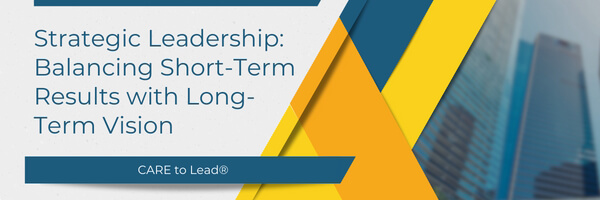
Strategic leadership is all about being versatile and adaptable. It means changing direction when needed, adjusting to market changes, and making well-informed decisions that align with the long-term vision. It also involves creating a culture of innovation and forward-thinking within your organization. Let’s dive into some key strategies that can help you thrive in this art:
1. Clear Goal Alignment: Clear goal alignment involves ensuring that every member of your organization understands how their daily tasks contribute to the broader long-term vision. It’s about creating a sense of purpose and direction that transcends short-term tasks.
How to do it:
- Define Clear Objectives: Clearly articulate your organization’s long-term goals. Make them specific, measurable, achievable, relevant, and time-bound (SMART). This provides direction and purpose. It also helps align your team, prioritize tasks, and measure progress.
- Cascade Goals: Cascade goals align departmental and individual goals with the organization’s strategy. By cascading goals down from higher to lower levels, alignment and support are fostered, promoting a cohesive and coordinated approach to achieving strategic objectives.
- Regular Communication: Maintain consistent and open lines of communication. Schedule meetings, conduct workshops, and provide frequent updates to all team members to enhance collaboration and drive us closer to our goals.
2. Agility and Adaptability: Agility and adaptability are about embracing change proactively. It means being open to adjustments when necessary and positioning your organization to seize opportunities and mitigate risks effectively.
How to do it:
- Cultivate a Growth Mindset: Encourage a mindset that sees challenges as opportunities for growth. Promote a culture of learning and innovation and build a team that isn’t afraid to take risks.
- Scenario Planning: Develop scenarios for potential future changes and disruptions. This helps your team prepare for various outcomes and adapt more smoothly when changes occur.
- Feedback Loops: Establish feedback mechanisms that allow your team to share insights and observations. Encourage them to suggest improvements and pivot when required.
3. Invest in Talent: Investing in talent involves identifying and nurturing individuals within your organization who possess the qualities of strategic thinkers. These individuals can play a pivotal role in achieving the right balance between short-term results and long-term vision.
How to do it:
- Identify High-Potential Individuals: Identify employees who exhibit qualities such as critical thinking, adaptability, and a long-term perspective. This can be done through assessments and performance evaluations.
- Mentorship and Development: Provide mentorship opportunities for high-potential employees. Pair them with experienced leaders who can guide their growth.
- Leadership Programs: Invest in leadership development programs such as CARE to Lead® that focus on strategic thinking, decision-making, and long-term planning. These programs can help nurture and refine strategic leadership skills.
From my own experiences, I have seen organizations that have prioritized improving strategic thinking skills among their senior team, line managers, and beyond. The outcomes were truly remarkable. Leaders at every level of the organization were empowered to think creatively and innovatively. In a specific instance, a new senior leader came up with a $4 million line of business, which would only have happened with the development of strategic thinking skills through leadership training. It is worth noting that strategic thinking is a unique skill set on its own.
Q&A Corner: One of our readers asked, “How can I balance the demands of my board for short-term results with the need to focus on our long-term vision?” It’s a common dilemma, and here’s the answer:
Here are some strategies to help you navigate this delicate balance:
- Open Communication: Foster open and transparent communication with your board. Emphasize the importance of short-term and long-term goals.
- Set Clear Expectations: Establish realistic expectations with your board regarding the timelines for short-term results.
- Educate Your Board: Educate them on the benefits of strategic patience and the potential consequences of short-term, quick-fix approaches.
- Showcase Milestones: Demonstrate that progress is being made and that short-term successes are building the foundation for long-term sustainability.
- Seek Expert Guidance: If necessary, seek advice from external experts or consultants who can provide an unbiased perspective on your organization’s strategic direction.
Here’s the thing: becoming a master of strategic leadership is an exciting and continuous journey. It’s all about making choices that not only benefit your organization in the present but also ensure its success in the future. Keep in mind that there is no one-size-fits-all solution, and being adaptable is crucial.
If you’ve found today’s discussion insightful and would like to explore how these principles can be tailored to your organization, I invite you to schedule a call with me.
Let’s have a meaningful conversation about your specific challenges and aspirations. We can discuss how the CARE to Lead® approach might align with your organization’s unique needs. It’s an opportunity to gain personalized insights and explore strategies that can drive both immediate results and long-term growth.
I value the opportunity to connect with you and share perspectives on leadership and strategic thinking. Feel free to reach out to schedule a call at your convenience. You can contact me at [email protected].

